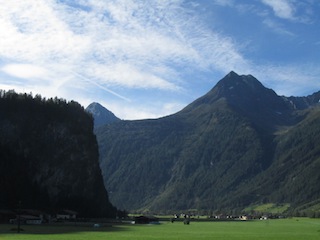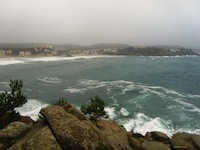Some travel destinations make you look long and hard for a scenic and entertaining walking route, while others come up with a whole range of suggestions.
But there is a third group of destinations that urge rather than suggest, leaving you the sole alternative of doing the hike of their own choosing or no hike at all – making any third choice feel eccentric if not downright ludicrous.
The southern Spanish city of Alicante falls into this group of “one-hiking route” destinations. So why did we go up Mount Benacantil in Alicante? Simply because it was there, visible from nearly every street uptown …

… as well as downtown.

And as though that was not reason enough for making our way up Mount Benacantil: the rock is also crowned by Alicante’s foremost tourist attraction, the Castillo de Santa Barbara, …
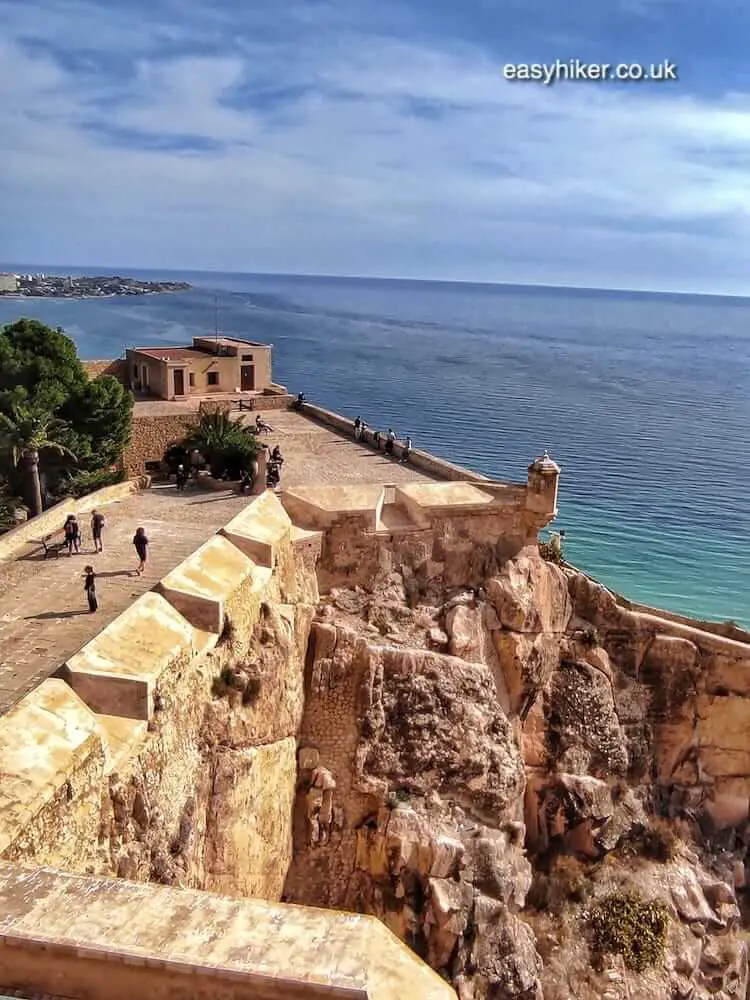
… named after the Christian saint on whose feast day – December 4 in 1248 – the army of Castile captured the fortress from Southern Spain’s Muslim rulers.
In contrast to the quickly renamed Castillo, meanwhile, the mountain on which the fortress had been built was allowed to keep its old name. Benacantil combines the Arabic words for “peak” (penna) and the surrounding city (Al-Laqant), the latter of which is rooted in the ancient Greek word for “white”.
Akra Leuka, the “white rock”: this is how the Carthaginians called the mountain when they established a military presence here in the 3rd century BC under Hamilcar Barca, the father of Hannibal. This short explanation, I believe, also serves as a useful introduction into Alicante’s complicated history.
Little of this chequered history is reflected by Alicante’s modern townscape which has an airy and light feel. Even the ancient fortifications do not give away the fact that they had been used by different civilizations for a period of well over 1,000 years – all visible remains of the 9th century castle built by the Muslims, for example, have practically disappeared.
But this is the way it goes: military structures are continuously updated to meet the tactical requirements of the day, which is why all historic fortresses look somewhat alike. They reflect not so much their origins but the strategic necessities of the last period when they were still in active use, which is usually some time in the 18th century.
A Walk Up the Rock of Ages in Alicante
The Castillo is no exception to this.
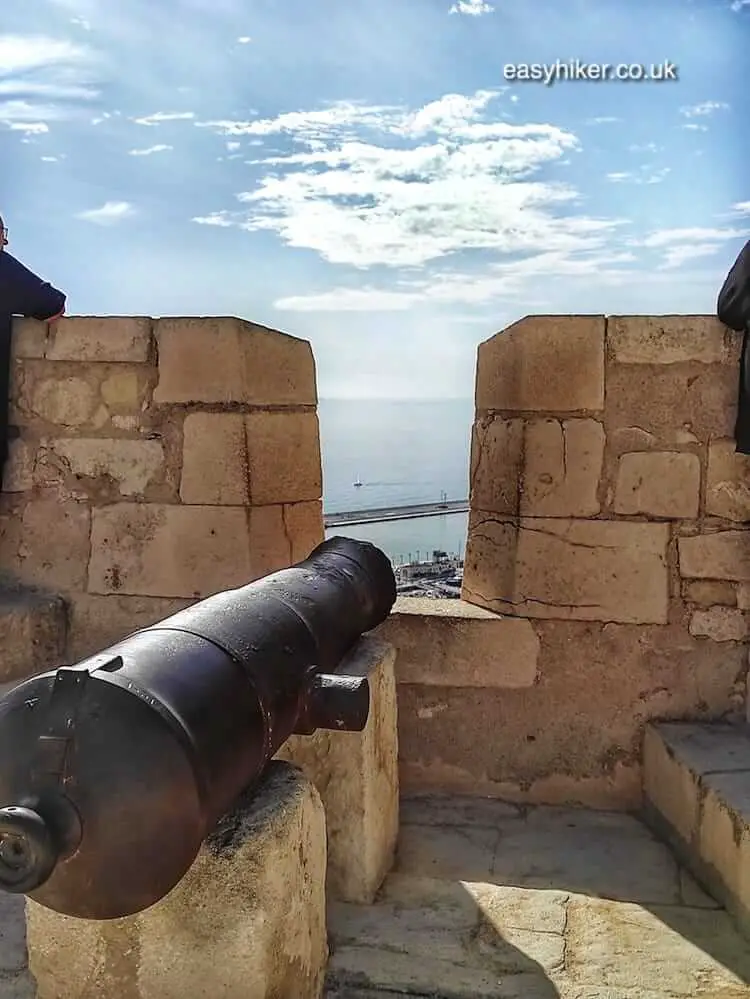
The reason why ancient strongholds attract so many visitors – only a few of whom have any interest in military history – is simple: military strategists of past centuries liked the same spectacular views from these hilltop fortresses as modern tourists, if not for the same reasons.
This is why Santa Barbara’s old lookout from where soldiers would have scanned the surrounding countryside and, above all, the sea for any signs of approaching enemy forces has, in modern times, so easily been converted into the most popular viewing platform on the “Rock of Ages”.

One can only surmise to what extent the soldiers on guard from past centuries also daydreamed over the views of the deep blue sea, which must surely have been as stunning 1,000 years ago as they are today.
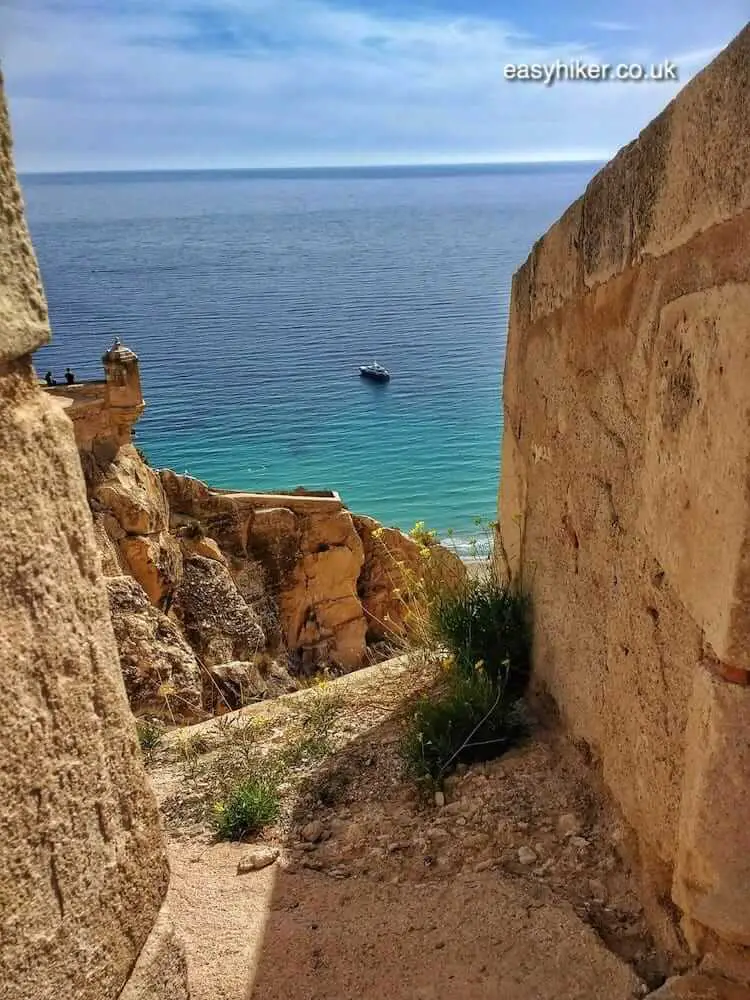
To complement those viewing platforms, the remaining military buildings and the ruins of the old church, …
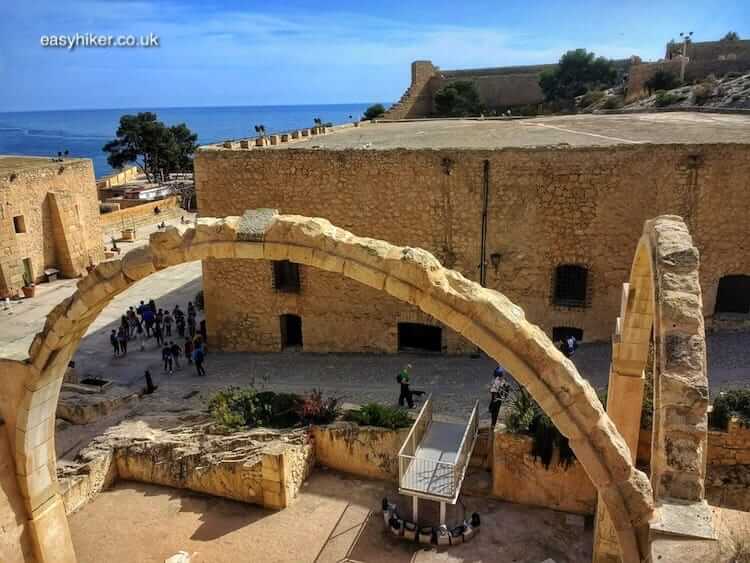
… some modern features have been added in recent times. They serve to draw attention to specifically attractive views …
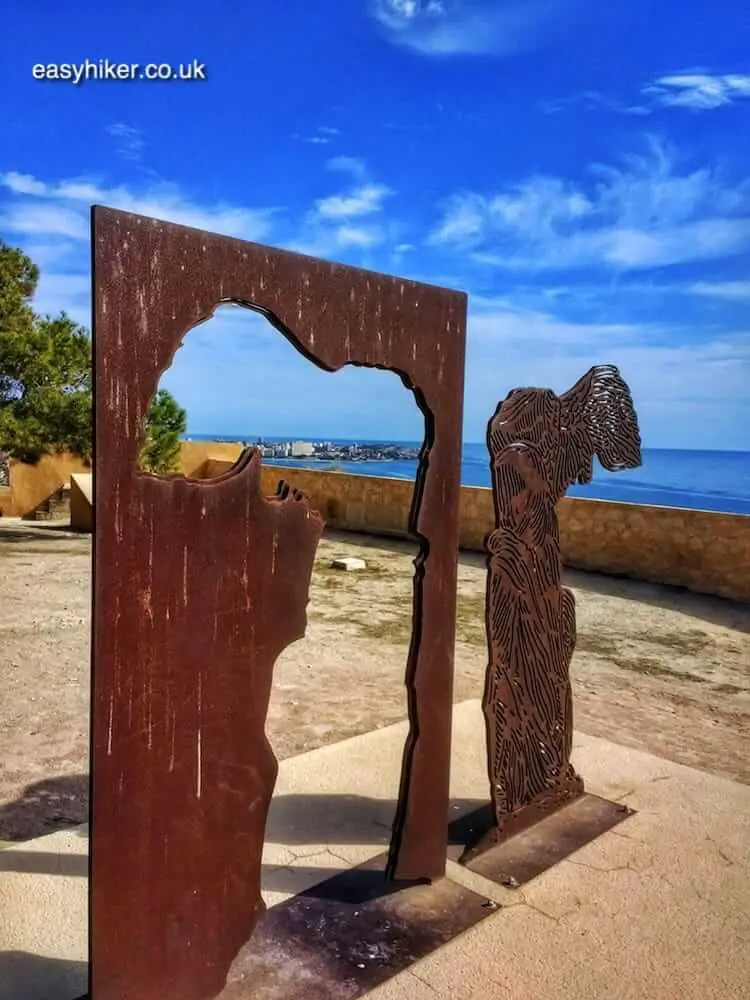
… and to entertain old and young visitors alike.
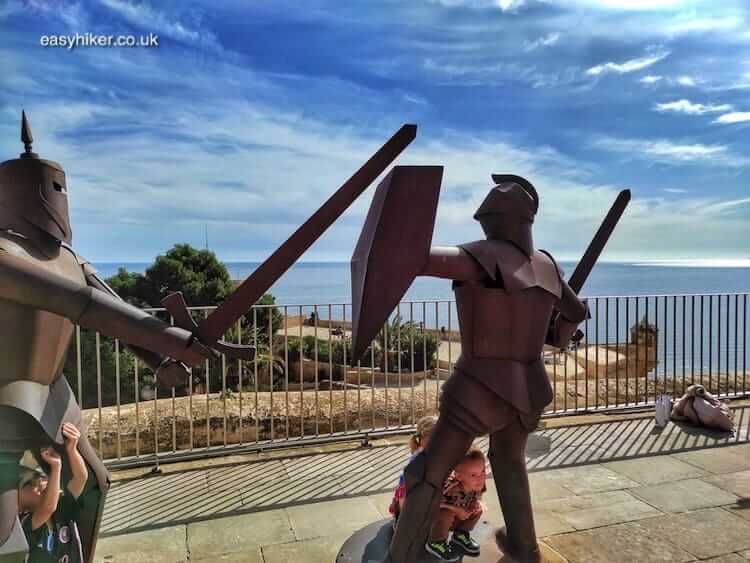
You can choose between several options for making your way up the ancient stronghold. Approach it from the north via the Carrer de Vazquez de Mella, following the walkway on the old castle walls, …
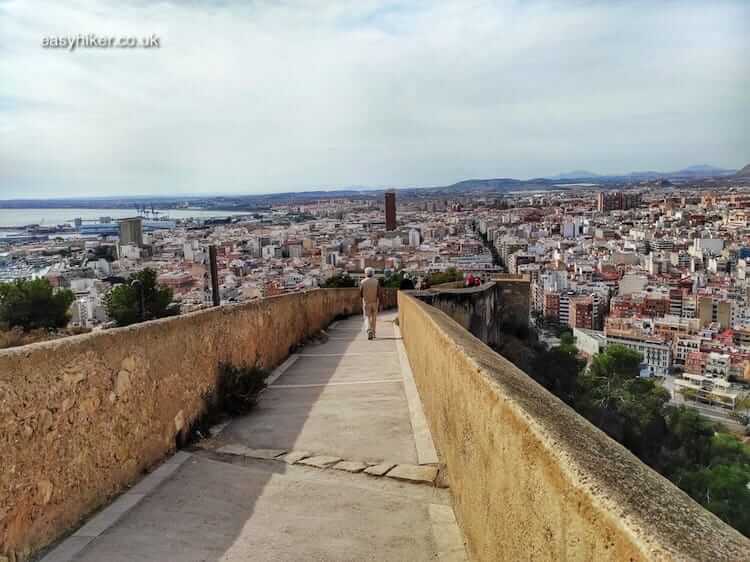
… or from the south – the town centre – through the Parc de l’Ereta and the Barrio Santa Cruz.
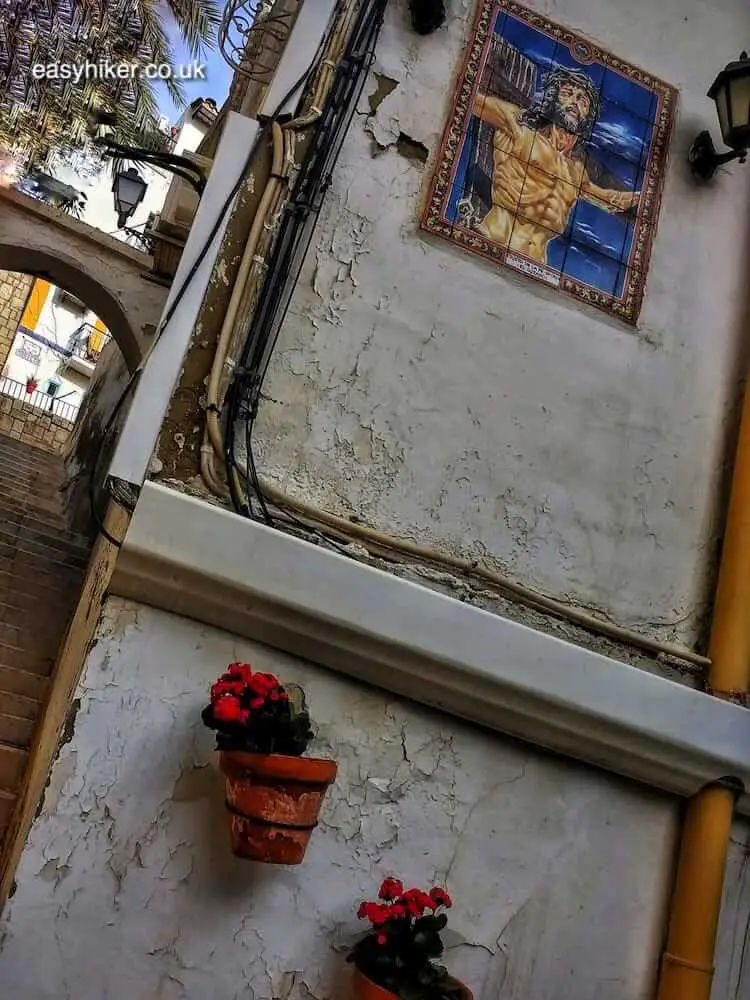
Both routes make for a fairly gentle climb despite the respectable height of 169 metres of the Rock of Ages. They are equipped with stairways, asphalted or (for short stretches) covered in gravel, allowing you to walk your way up in the same shoes that you would wear for an urban stroll.
But there is a third, even easier way: you can take the tunnel opposite the Playa de Postiguet, approx. 250 metres north from Plaza de Mar, which leads you straight to an elevator.
The ride up will cost you € 2.70 (if you are 65 or older, it is free) and allows you – walking down after your visit to the castle instead of up before – to enjoy all of the route’s visual attractions from a superior perspective, wandering into the scenic views of the townscape rather than away from them.

This has only one drawback: not having arrived on foot, it can be a trifle tricky to find a way out of the castle’s labyrinthine maze of walkways.
There appears to be only a single exit: go past the ruins of the old church down to the level of the Museu de la Ciutat d’Alacant and exit through the arch opposite the main entrance of the Museum.
Then, at the bottom of the ramp, turn left into the wide footpath for a broad sweep around the castle.

This gives you the opportunity to see the fortress from “the other” side, the one that looks away from downtown Alicante and presents a horizontal and even bulkier view than the gradual slope into the city centre. It also makes for a nice walk through a bit of southern Mediterranean countryside.
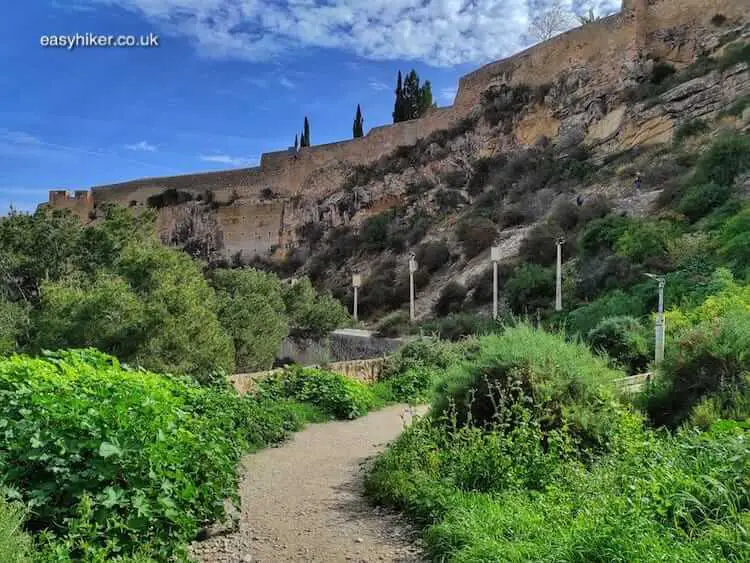
Soon, you will be faced by a wall with two openings. The gate on your right hand side leads you to the walkway on top of the old castle walls, while the gate a little higher up the slope takes you on the route to the old town and the town centre.
What attractions lie in wait for you there will be the subject of next week’s post.


